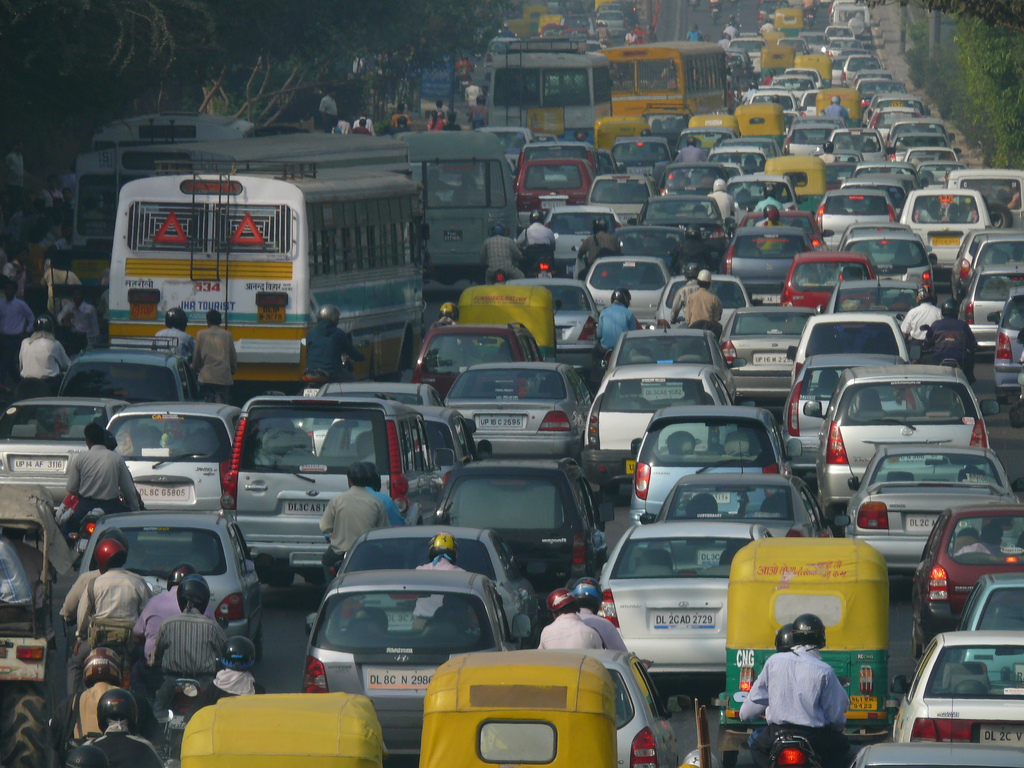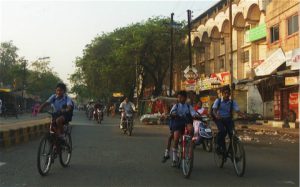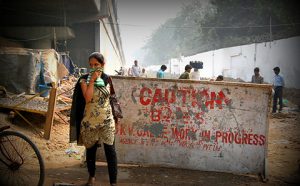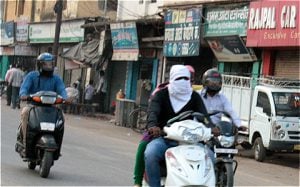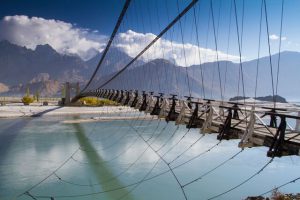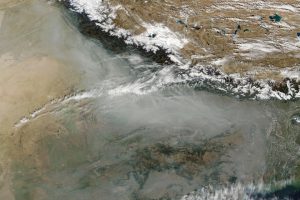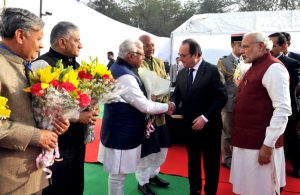Beginning the New Year with a radical traffic plan to tackle air pollution, India’s capital New Delhi defied the sceptics and passed its 'odd-even' traffic test with an unexpectedly high level of compliance.
After the curbs expired on January 15, opinion was divided on how effective the measures were at cleaning the air of the world’s most polluted city. However, there was consensus among residents who agreed that increasing awareness was an important first step.
Following India’s first traffic experiment, where private cars with even and odd number plates were only allowed on the road on alternate days, the New Delhi government expressed its satisfaction.
“Proud of U [you] Delhi. U give me confidence. Together, we can achieve anything. 1st phase of Odd Even ends today. Will do again in improved form,” Delhi’s chief minister Arvind Kejriwal said in a tweet.
Kejriwal also credited the citizens of Delhi for making it a success.
“The whole world was watching to see if the odd-even (scheme) would be successful and Delhiites have set an example. It wasn’t because of the Rs.2,000 (194 yuan) fine, people cooperated because they understood it. Pollution came down but the major benefit that people got was that roads became congestion free,” Kejriwal added.
According to the New Delhi government, pollution levels fell by up to a quarter during the two-week period, and an apparent easing of congestion appeared to win round an initially sceptical public. Around 90% people were opposed to the scheme before it was implemented, according to government polling. But by the end an overwhelming majority of those surveyed expressed their support.
New Delhi Transport Minister Gopal Rai said the scheme had helped to cut down vehicle pollution. “In December, PM 2.5 particles were above 600 micrograms per cubic metre (µg/m3), but in the last 15 days, average PM2.5 levels stayed at 400 even though weather conditions were worse in January. CSE (the Centre for Science and Environment) readings also says so. Had the scheme not been in place, the pollution level would have crossed 600.”
According to World Health Organisation (WHO) standards, the average level of particulate matter below 2.5 microns (PM2.5) should not exceed 10 micrograms per cubic metre. The upper limit in India is 60.
Another benefit of the policy was that the public transport system, especially buses, became more efficient. According to the government, buses with a target to cover 200 kilometres of ground a day typically average only 160 kilometres due to traffic congestion. In the January 1-15 period, however, they covered 220 kilometres a day. An estimated 5.3 million people commuted by bus during the first two weeks of the year, up from 4.7 million in previous weeks.
The city government said that the scheme's success was down to the scale of cooperation among the people.
A total of 9,140 fines were issued for violating the odd-even rule during the period. Given that New Delhi has 2.8 million private cars and jeeps, non-compliance amounted to less than 0.5%.
Experts divided
However, the impact of the traffic experiment on air pollution has been questioned.
While CSE found that the drop in the number of vehicles did have a positive impact on the quality of air, some experts, such as the Council on Energy, Environment and Water (CEEW), said there was no conclusive evidence to prove that the odd-even policy improved New Delhi’s air or reduced traffic congestion.
CEEW’s measurements showed that average air pollution levels had increased in the first week of January compared to the previous week.
In the second week of January, air quality was marginally better, but still worse than the last week of December.
“In the short-term, meteorological variables such as temperature, wind speed and precipitation have a significant impact, and as a result it is hard to provide conclusive evidence on the impact of the odd-even policy on air quality,” CEEW said.
CEEW also found that the number of private cars on the road did not fall during the two-week period compared to the final week of December.
One possible explanation is that the overall travel demand in the last week of December was lower than in an average week (across the year). But without the odd-even policy, the numbers of cars on the road in January could have been higher, CEEW concluded.
A traffic count in the third week of January (after the restrictions were lifted) might be able to provide more information.
Arunabha Ghosh chief executive of CEEW said: “It doesn’t mean that the policy has failed. It has helped generate awareness. But we shouldn’t restrict our response to just traffic, other sources of pollution also need to be tackled.”
Ghosh added that obtaining conclusive data is hugely important in measuring the success of such schemes, and recommended installing monitoring systems at different locations.
Anumita Roy Chowdhury, executive director of research and advocacy at CSE, said the curbs could be repeated during days when air quality is expected to worsen.
“The big lesson is that through a temporary measure, we can bring down the volume of vehicles on the road,” she said, adding that the government needs to roll out short-term and medium-term actions such as introducing tax penalties and increased parking fees for cars.
Car journeys decrease
Chowdhury pointed to a study by the School of Planning and Architecture, New Delhi, that monitored 11 sites across the city and found that car journeys decreased by 30-35% during the trial period.
The Energy and Resources Institute (TERI) said the campaign had considerable additional benefits, including reduced road congestion, increased average car speeds and lower fuel use. “The effect of the odd-even scheme could be small. But when the concentration [of air pollution] is as high as it is in Delhi, [any] reduction in the PM 2.5 concentration is significant in helping to reduce the health impacts,” a spokesperson from the think-tank said.
A report published by Greenpeace published on January 14 highlighted the huge scale of the problem, showing alarmingly high concentrations of cancer-causing heavy metals such as arsenic and nickel in New Delhi’s air.
Impact on health
That the samples were collected and tested inside the classrooms of five schools across the city underscores the gravity of the health crisis prompted by the city’s foul air. According to the Greenpeace study, PM2.5 concentrations were five times above the Indian safety limit and 11 times above the limit prescribed by WHO.
An on-the-spot lung test conducted by the New Delhi government threw up equally dismal results – 35% of the 3,019 residents tested were found to have impaired lung function and could not breathe properly.
As the capital weighs up the extent to which the curbs were successful, other Indian cities are discussing whether to follow New Delhi’s example.
The Bombay High Court has issued notices to the Maharashtra state government and the Maharashtra Pollution Control Board to report on the feasibility of an odd-even scheme for private cars in Mumbai.
